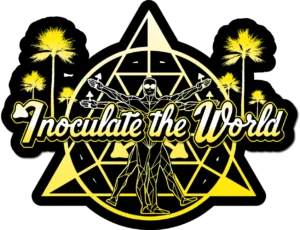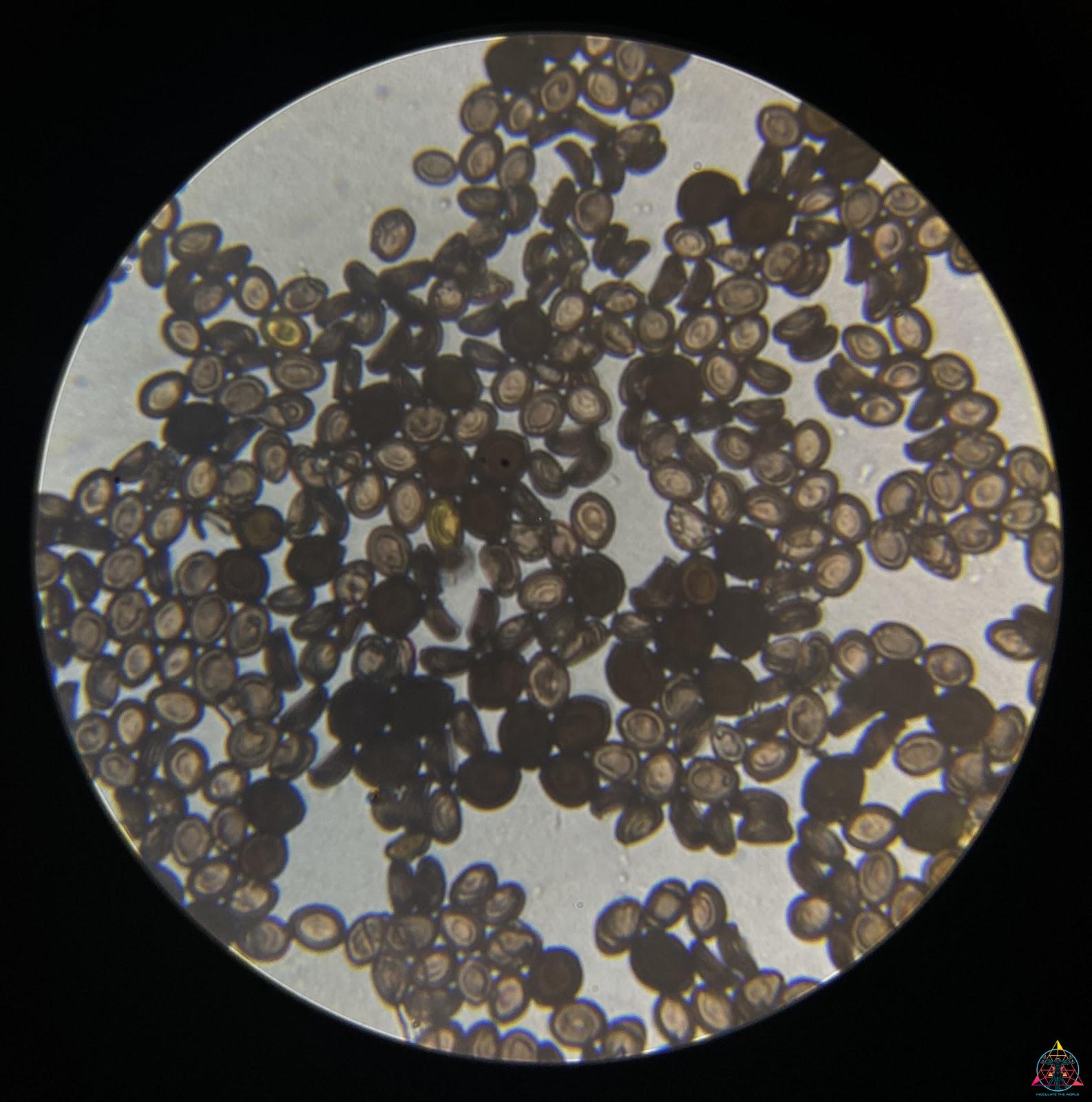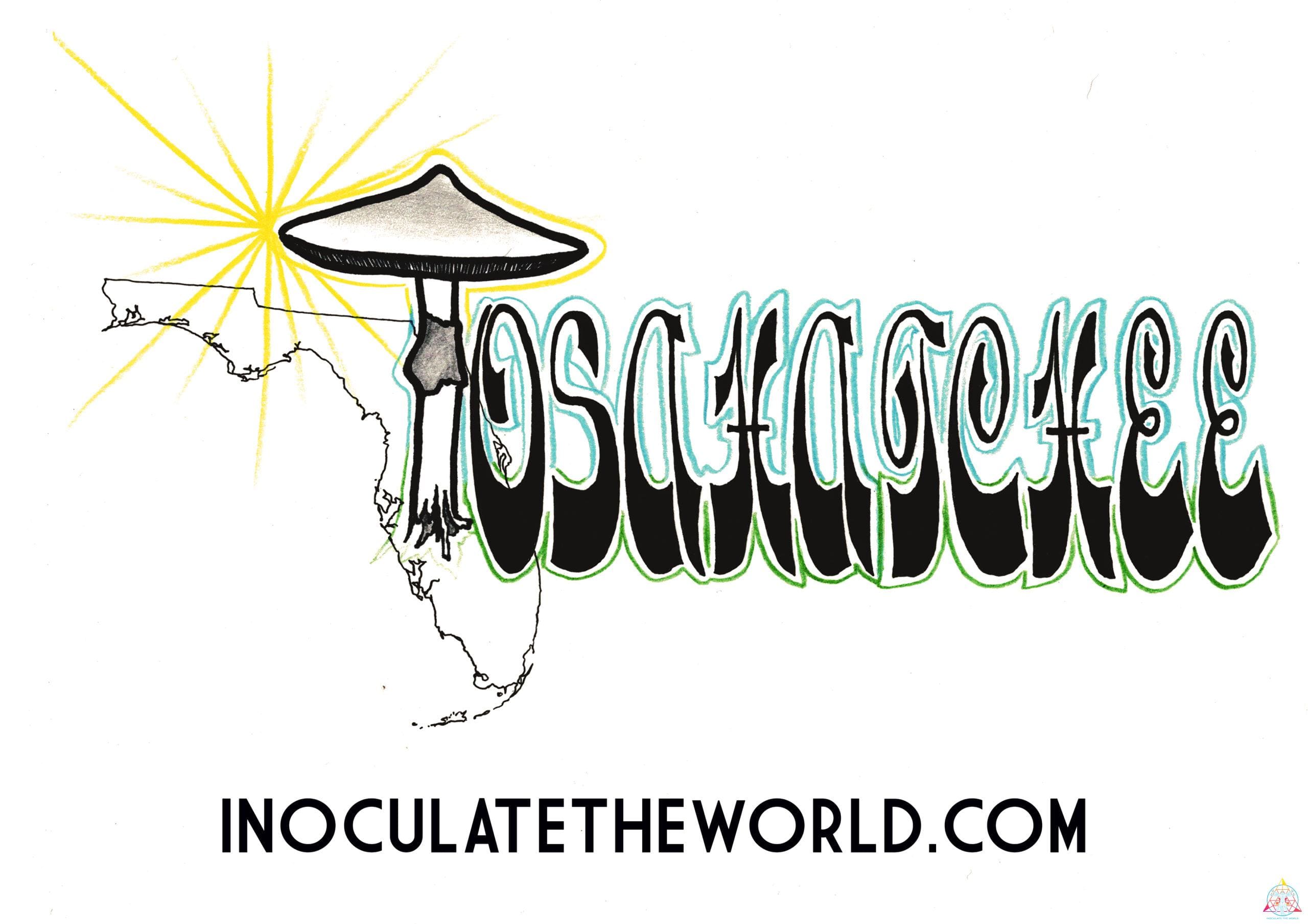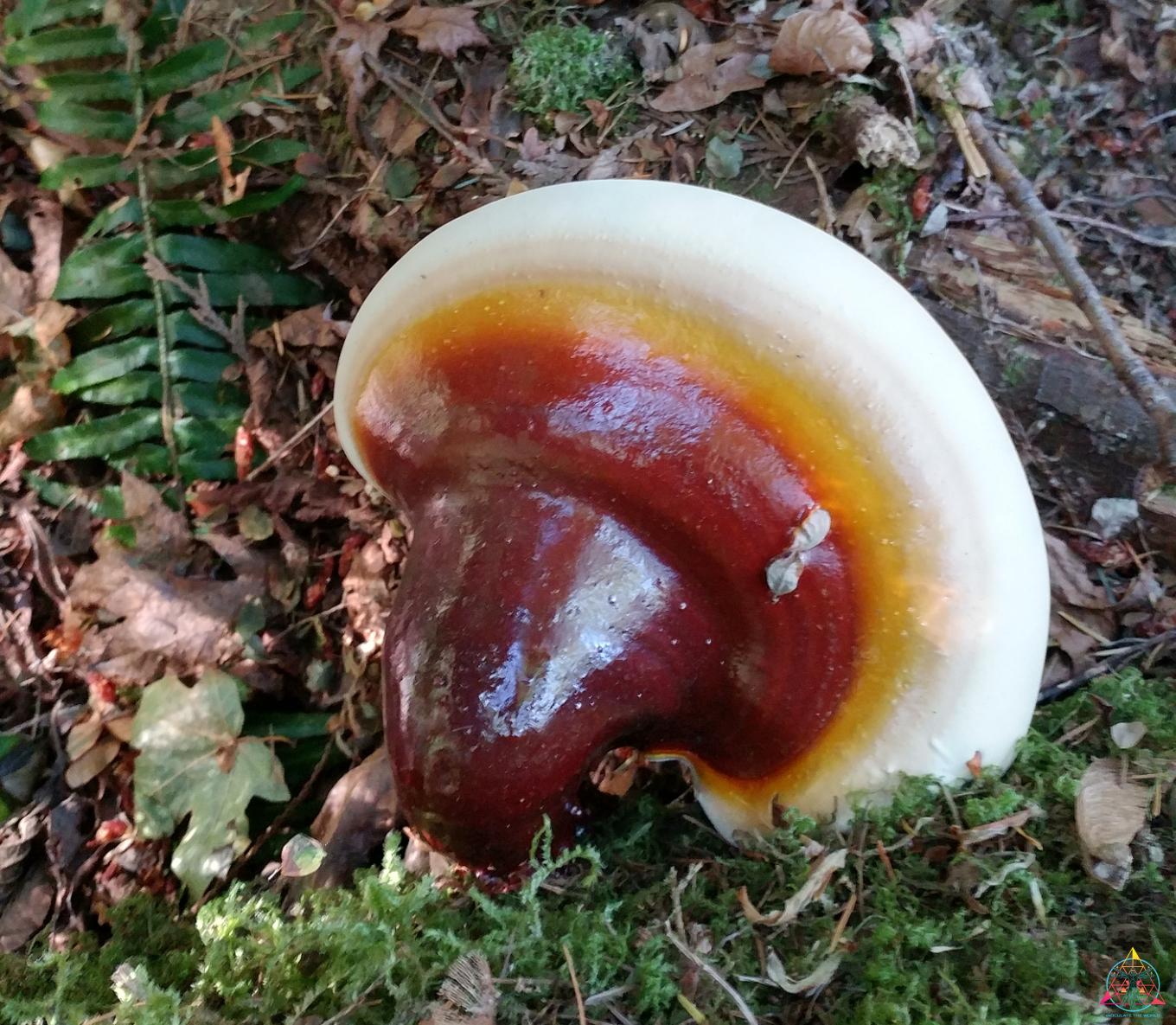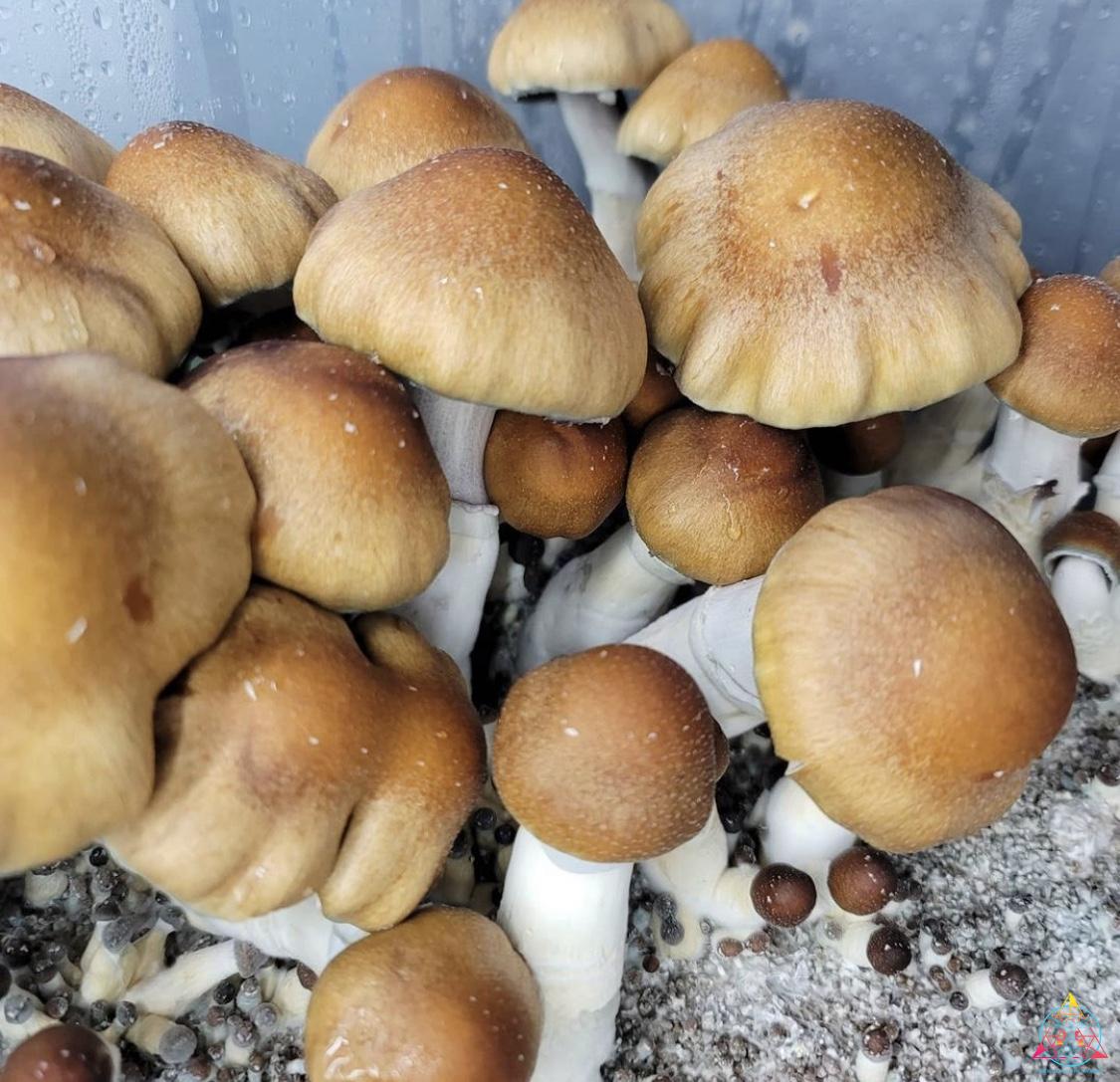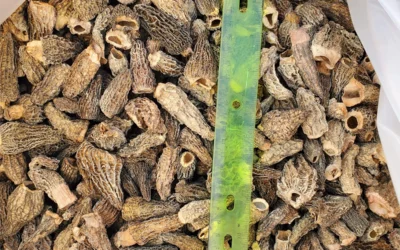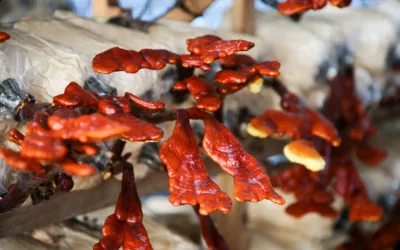Interested in working with magic mushroom spores? Here’s a comprehensive guide on everything you need to know about spores; from how to store spores to how to view them under a microscope.

What are spores?
Spores are the tiny reproductive cells of the fungi kingdom that serve a similar purpose to seeds in the plant world. Mushroom spores are microscopic single-cells that require a microscope to view in detail. However, mushrooms produce billions of spores which can be seen with the naked eye when accumulated together.

How to store spores
It is important to properly store your mushroom spores to maintain their integrity over time. The factors that affect spore longevity include exposure to oxygen, heat, and light. So it is recommended that you store your spores in an airtight container inside a dark drawer at room temperature. Well stored spores have been known to be viable after 30+ years of storage!
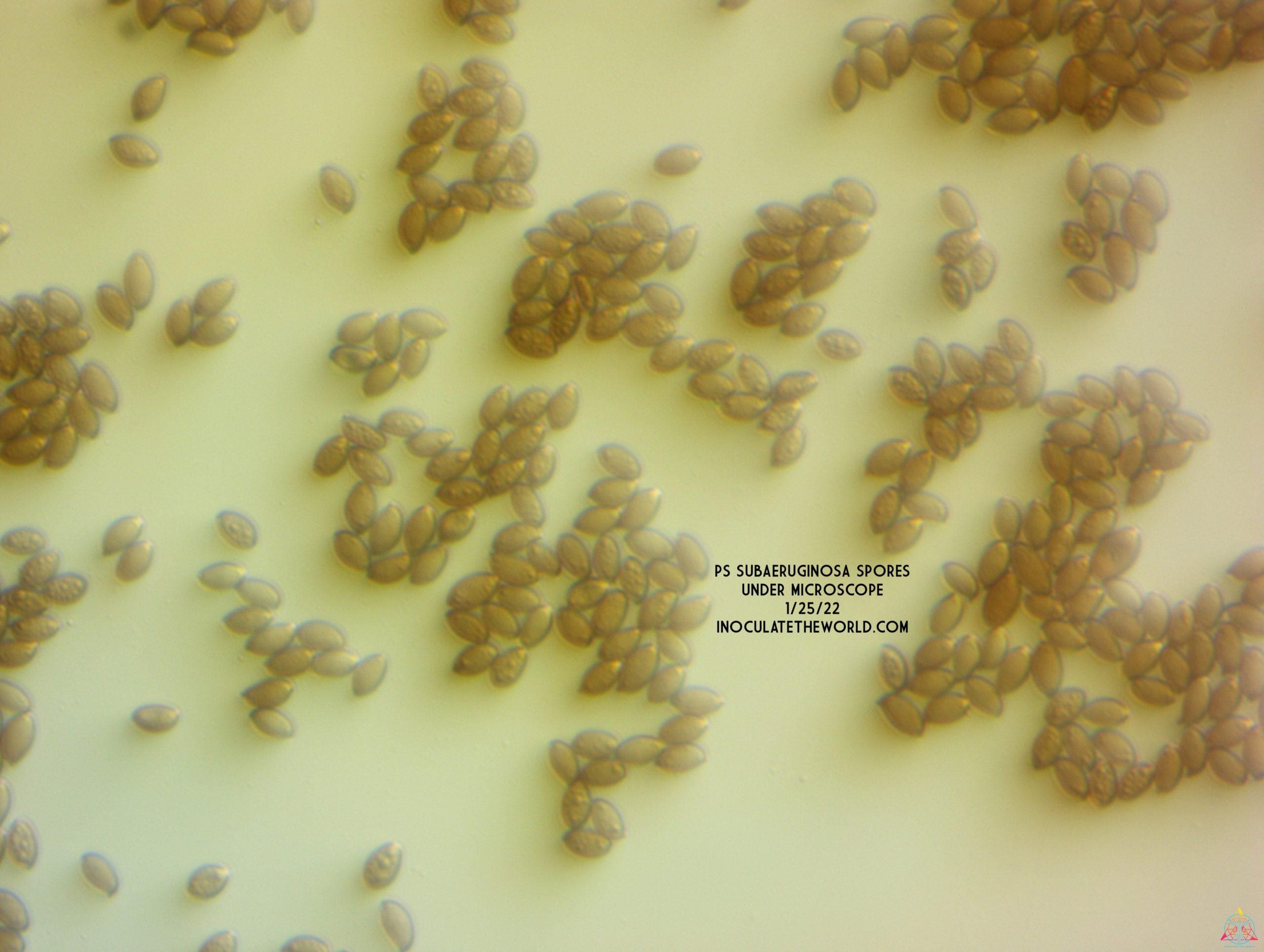
Spore Characteristics
Spores will vary in their size, shape, and color depending on the species of mushroom. Spore traits can even vary between different varieties of the same species. For example, P. cubensis spores are typically a dark purple/black but can also be rusty brown, gold and clear. We recommend viewing a wide variety of mushroom spores to be able to see all the different variations!
Spore Packaging
Psychedelic mushroom spores are sold in three standard types of packaging; spore prints, spore syringes, and spore swabs. The type of packaging used is often determined by the type of mushroom that the spores come from. When purchasing spores from a trusted vendor, like us at Inoculate The World, you can be sure to receive high-quality spores regardless of the packaging type. However, each of the three packaging types come with their own pros and cons so we’ll break them down for you.
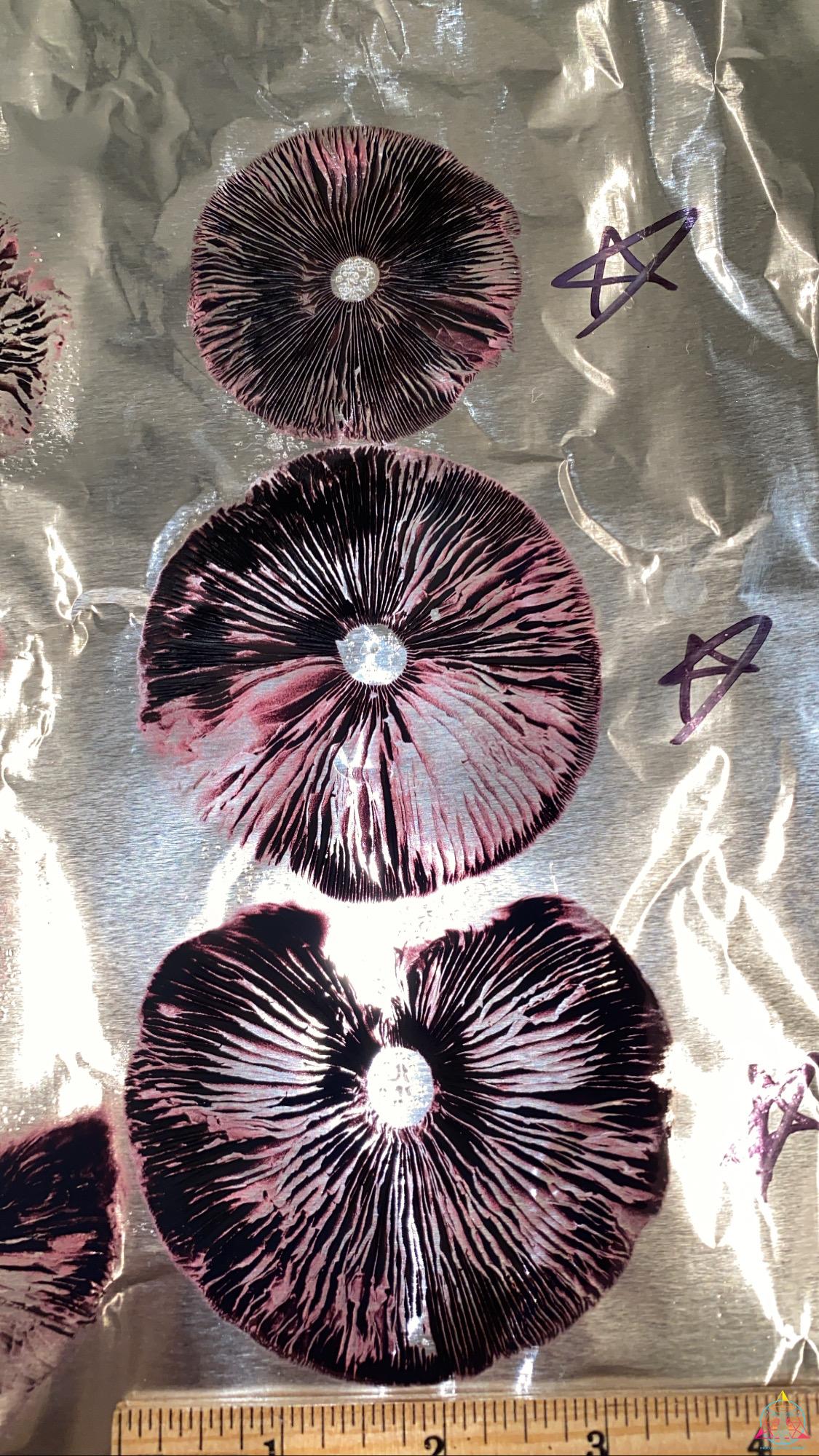
Spore Print
A spore print is made by removing the cap of a mushroom from the stipe (stem) and placing it gill side down on a sterile surface. The cap is then left covered for around 24 hours to drop its spores on the sterile surface. Spore prints are often taken on aluminum foil or mylar to preserve the spores but can also be made on glass sides to make microscope viewing easier.
Spores prints will typically vary in size, shape, and color depending on the type of mushroom that produced the spores. Spore prints contain so many spores that a print as small as a dime contains millions of individual spores. On average, a single print will contain enough spores to make anywhere from 5 to 100 10ml spore syringes!
Pros: Most cost effective medium for spores as you get the most spores for your money.
Cons: Not as easy for beginners to use as spore syringes.
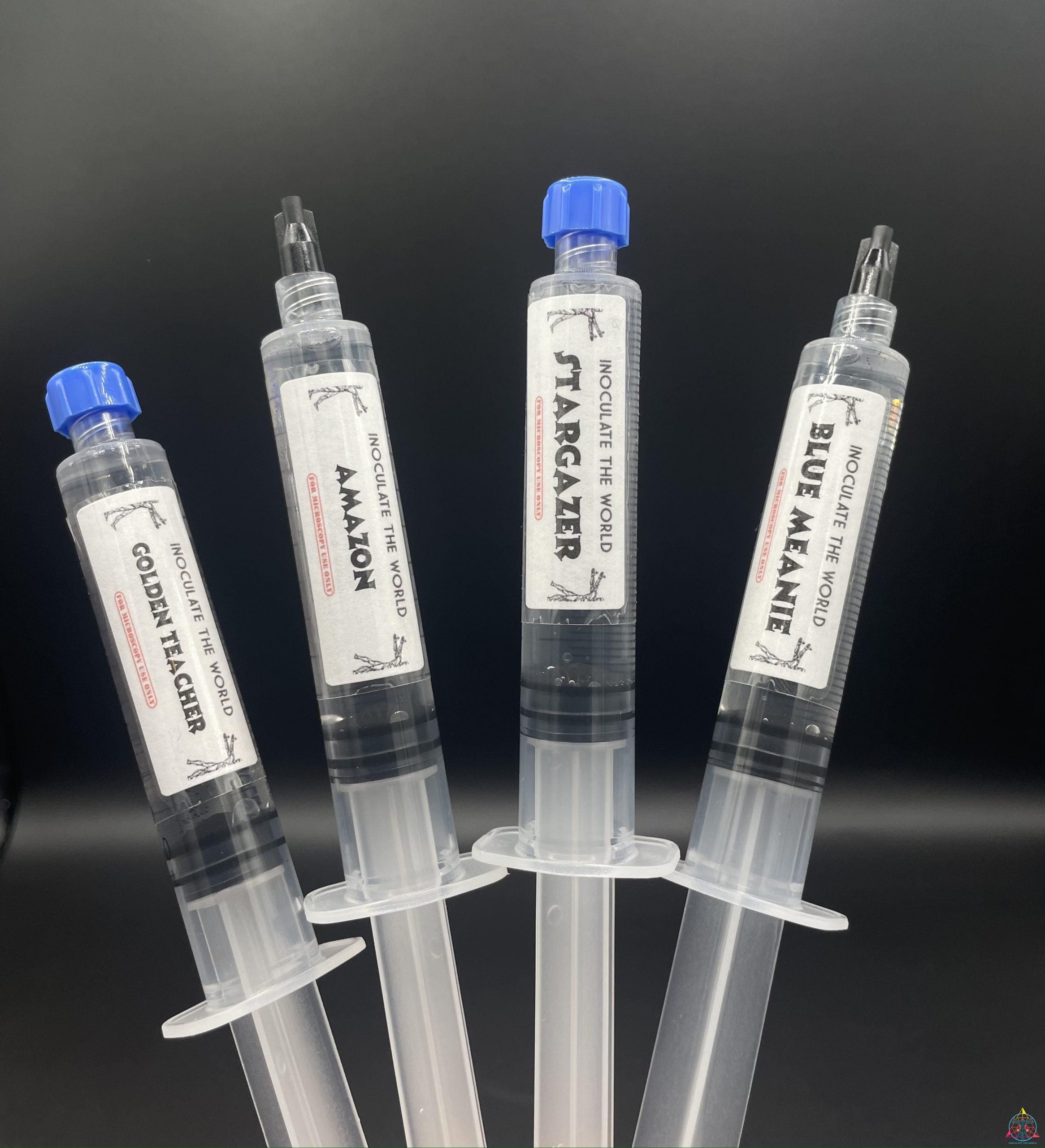
Spore Syringe
Spore syringes are made by scraping the spores from a spore print into a sterile aqueous solution, commonly distilled water. The liquid solution is then mixed thoroughly to ensure an even distribution of spores throughout the distilled water. The syringes are then filled with the spore solution and caped off until they are ready to be used. The whole process is typically done in a sterile environment in front of a laminar flow hood. Spore syringes from Inoculate The World contain 10ml of solution and use a 18 gauge needle to easily apply the spores to your microscope slide.
Pros: Easy to work with for both beginners and experts alike.
Cons: Spore syringes have the lowest storage shelf life of the three spore mediums.
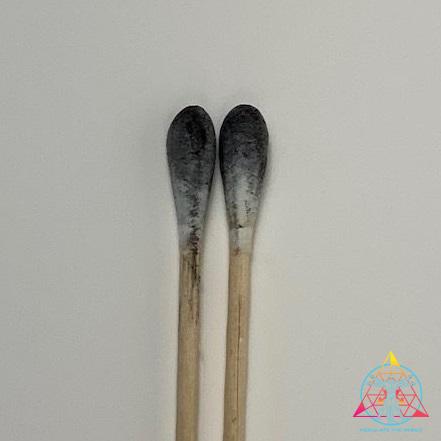
Spore Swab
Spore swabs are made by running a sterile cotton swab upside the gills of the mushroom cap to collect the valued spores. With certain strains having a spore drop percentage of roughly 0-5%, these strains are near impossible to get spore prints from. For these reasons, some mushroom species are only available in spore swab form.
Pros: Spore swabs have a particularly long shelf life, similar to spore prints.
Cons: It is slightly more difficult to apply spores to a glass slide with a spore swab than with a spore syringe or spore print.
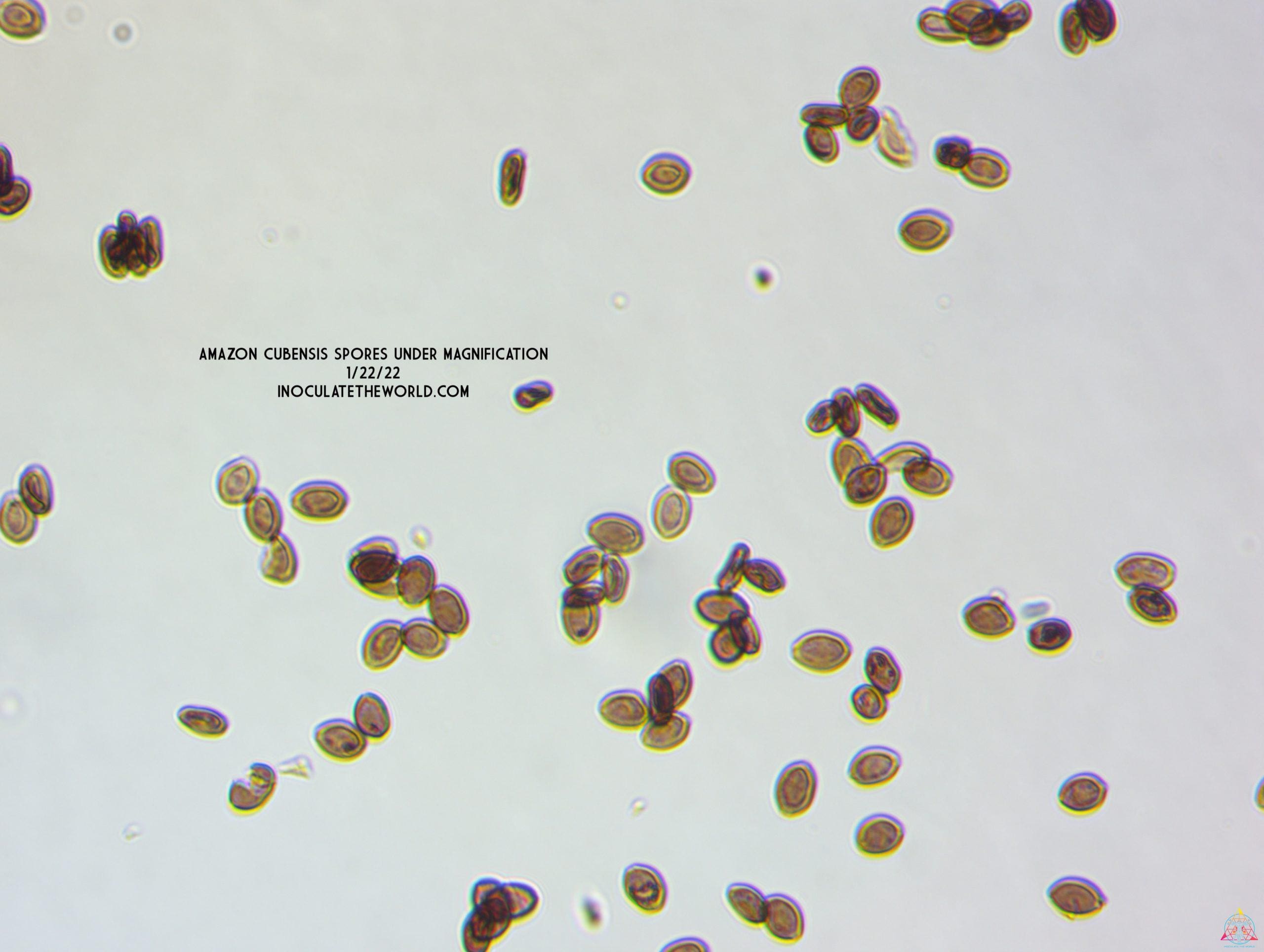
How to view spores under a microscope
- Prepare your microscope and accessories in a clean environment to avoid cross contamination.
- Apply your spores to a clean slide. If using a spore syringe or isolated spore syringe, shake the syringe vigorously to distribute the spores throughout the solution before applying a drop to the glass slide. If using a spore print or spore swab, use a clean tool to scrape off some spores onto the glass slide. Once the spores are on the slide, place a cover slip on top of them to protect them while viewing.
- Place the glass slide with spores onto your microscope stage and adjust as necessary to bring the view into focus. Take photos, measure spore size, and most of all – have fun!
Related Articles
Maria Sabina, Mazatec Wisdom, and the Costs of Psychedelic Tourism
Maria Sabina is often remembered as one of the most influential figures in the psychedelic world, renowned for her role as a poet, and shaman, and as the woman who introduced magic mushrooms to Gordon Wasson, and thus, the Western world. Maria Sabina’s quotes...
Forage to Feast: Exploring the Biology and Culinary Magic of Morel Mushrooms
It’s a mild spring day, with the warm sun casting flecks of light on the forest floor. Deciduous tree branches tangle together overhead and close in around a grassy depression, likely the remnant of a past disruption or abandoned pathway. The mushroom forager...
The Mushroom of Immortality: Learn About Medicinal Reishi Mushrooms
Reishi, along with the entire Ganoderma Genus, is prized for its health benefits, and is among the most unique-looking fungi in our collection. In this article, we’ll discuss some of the health benefits of Reishi mushrooms and Ganoderma as a whole. We’ll also discuss...

